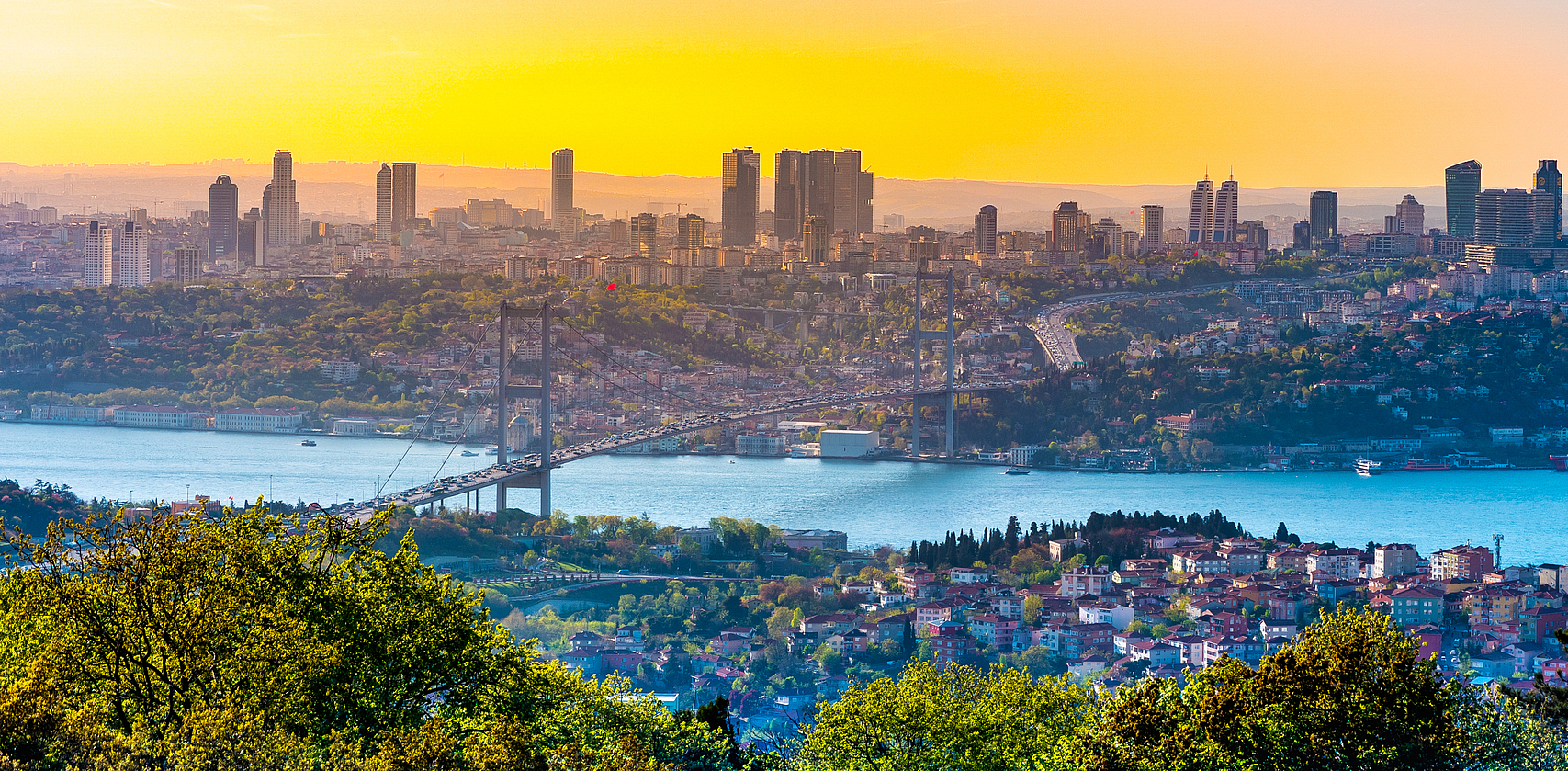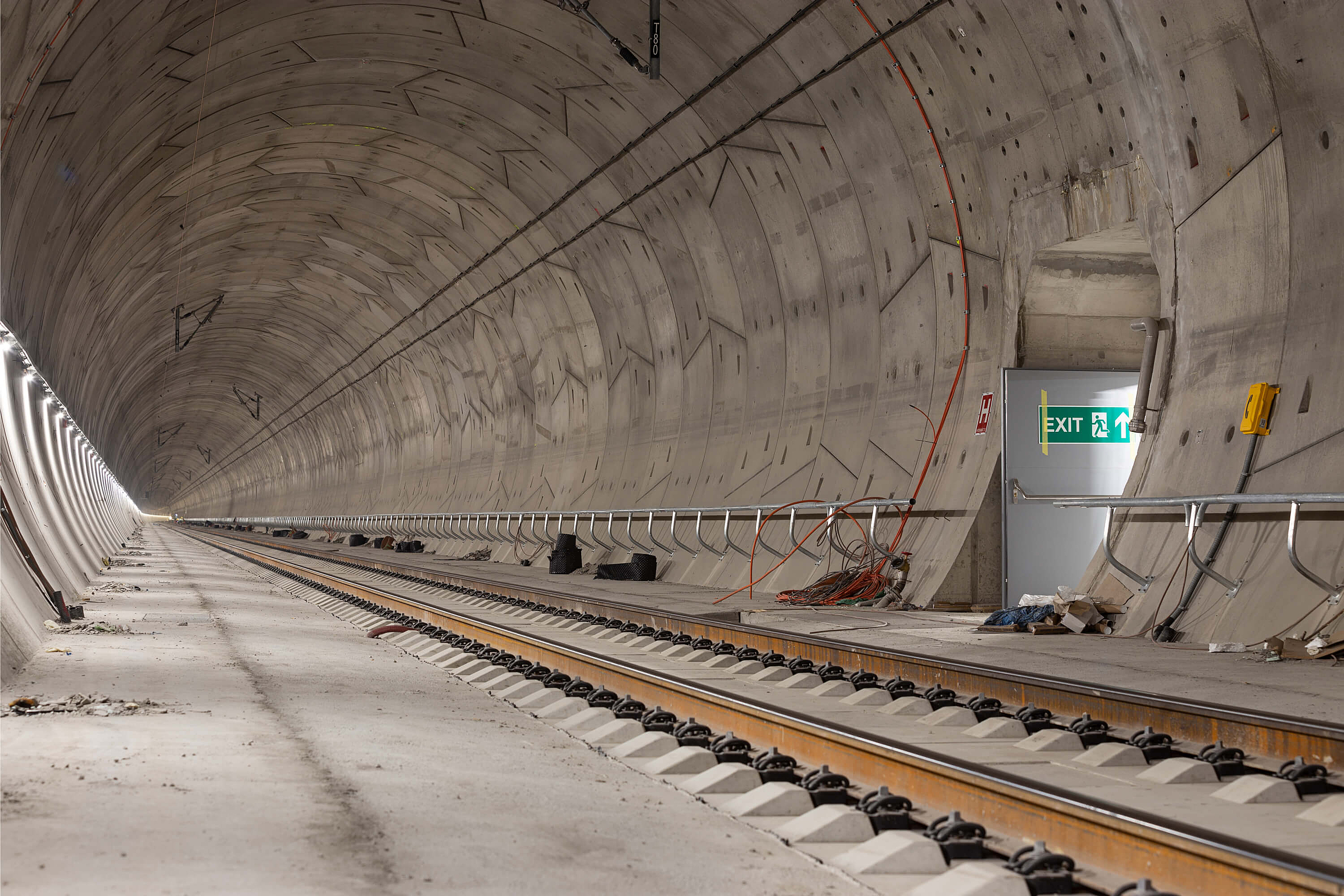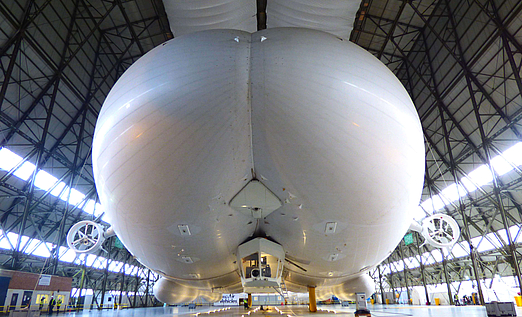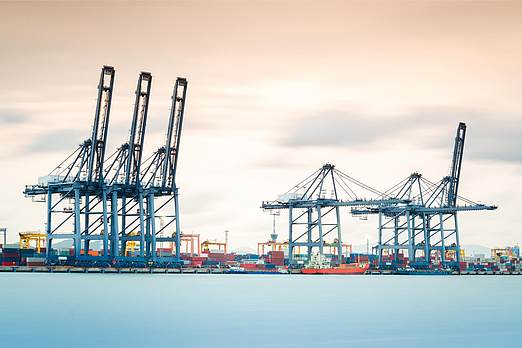A country at the intersection of cultures and transport routes
- Insights
As a link between East and West, the country on the Bosporus has played a key role throughout history. Turkey has always been an important hub, both culturally and for transport. An expansion of rail and freight traffic should now improve the country’s connection with Asia by means of the trans-Caspian route of the Silk Road. In its role as a bridge between Europe and Asia, Turkey has already laid a strong foundation, such as with construction of the impressive Marmaray railway tunnel.

Located on the Bosporus Strait and the Black Sea as well as in close proximity to Eastern Europe, the Caucasus and the Near East, Turkey is of exceptional geostrategic significance. This was recognized early by the merchants of the Far East, who have transported their goods over the Silk Road since ancient times. Countless stories are told of this oldest trade route in the world, which included a route passing through Constantinople, now known as Istanbul, on its way to Europe. Istanbul itself is the fifteenth-largest city in the world with its population of 15.9 million, a cultural and economic metropolis that can be considered the “true center” of the country.
Trans-Caspian branch of the Silk Road
In accordance with tradition, the “New Silk Road” is still used as a trade route between Asia and Europe. The most important connection currently runs from China through Kazakhstan and Russia to Europe. Long underestimated, but still significant, is the trans-Caspian route, which crosses Central Asia and the Caspian Sea, from Azerbaijan through Georgia and into Turkey. One critical component in the success of this route lies in the expansion of Eurasian railway capacity. The first steps to promote rail transport along this path are already bearing fruit. Traffic here has grown by about 80 percent in the last five years: in 2014, only about 300 trains traveled this route, while in 2019 it was nearly 7,000. The potential capacity is far from exhausted, and a further expansion is already in planning. The routes via the “middle branch” of the Silk Road remain a very promising trade connection for Turkey.
Middle Silk Road as alternative
Despite the turbulent history of the region, Turkey still sees itself as an important bridge between Asia and Europe, a potential recognized not only by merchants of the ancient world. The current government is also well aware of this economic significance and the associated demands on the country’s infrastructure. As a result, urgently needed modernization work and a staged expansion of the Turkish railway network are being driven forward at a rapid pace. One beneficial side effect: this is reducing Turkey’s dependence on Russia and Iran with regard to transport routes, positioning the country as a new regional logistics hub. After all, it is a fact that over 95 percent of the existing railway traffic between Asia and Europe passes either through Kazakhstan or further north on the trans-Siberian railway in Russia. The advantages are clear: the routes are shorter, the infrastructure better developed and the operating processes well established. There are also fewer national borders to cross, meaning fewer customs formalities.
The “BTK route” is of central importance
To correct this situation, the previously mentioned route section from Baku (Azerbaijan) – Tiflis (Georgia) – Kars (Turkey) is considered of great importance. The plan is to ramp up transports by 2034 to as many as 17 million tons of goods on the so-called Middle Silk Road. However, investments are urgently needed: for example, the regional railway network must be expanded and electrified and modern control and safety equipment must be installed. It also goes without saying that none of this will succeed without logistics centers and the associated terminals. A high-capacity connection to the European railway network is also required since the route definitely does not end at the Bosporus.

A shortcut through the Arctic?
- Facts
The Northern Sea Route is the shortest maritime route from Europe to Asia. Its only drawback is that it is icebound and impassable for half the year. But it seems this is already changing.
More information
“Samba Pa Ti”
- Facts
It is a party that breaks all records and the world's largest carnival. We took a look at the celebrations and ventured a glimpse behind the scenes of Brazil's transport industry.
More information
Crossing the Bosporus – a challenge?
The Bosporus Strait, which has been open to international commercial shipping since the 1920s, is one of the most important maritime shipping routes in the world. But while ships move freely in the north-south direction, the strait poses a geographic obstacle to traffic moving in the east-west direction. Plans for massive bridges were frequently discussed, but it took a long time before the first proper construction project was completed. It was in 1973 that the first of now three massive suspension bridges was opened. This was followed in 1988 by the Fatih Sultan Mehmet Bridge and in 2018 by the Yavuz Sultan Selim Bridge. Each of these is a technical marvel in its own right, with each design more brilliant than the last. But by the time the third bridge was opened, there had already been a tunnel under the Bosporus for some time. Yes, you read that correctly. A tunnel.
Marmaray Tunnel with the first freight train from China
In the meantime, another tunnel has even been added for car traffic, but it all started with the Marmaray Tunnel, which is the actual heart of the completely new Marmaray route. Since 2013, this rail connection has been the first direct connection between the continents with a standard track gauge. Hard as it may be to imagine, prior to this wagons had to be carried across by ferry.
A 1,387-meter long immersed tube tunnel now passes below the strait, 56 m below sea level. Eleven tunnel elements were preassembled and submerged at the site into a ditch previously excavated in the sea floor. After the segments were connected, the ditch was refilled. As the region is at high risk to earthquakes, the greatest attention was paid to safety, including the development of a custom concrete mixture. The construction costs of the project, which was started in 2004, were expected to be roughly €2.5 billion. As so frequently occurs with large construction projects, however, the tunnel went over budget, and the actual figures have been kept confidential. Nevertheless, the project is a great success story: due to the high level of local and long-distance traffic, the freight trains only operate at night. The first freight train from Xi’an to Prague passed through the 13-kilometer tunnel below the Bosporus in November 2019. The train was traveling on the trans-Caspian route, and it will be followed by many more as the Turkish state railway is expecting a transport volume of five million tons on this route by the year 2025.
Of sweet dreams and real sweets at the “Bayram of Sweets” festival
In the meantime, the next gigantic prestige projects are building steam. For one, the current government has announced to great fanfare the construction of a new ship crossing – a second canal alongside the Bosporus. This will be a project of the century in many respects. But another tunnel is also to be added: 6.5 kilometers long, 110 meters below sea level, the “Great Istanbul Tunnel” will connect two continents on three (!) levels. Two levels will be dedicated to automobile traffic, and the level between them will carry two railway tracks. In consideration of the current global situation, it is hard to say at the moment whether these are anything more than just “sweet dreams”.
Speaking of sweetness. The sale of sweet delicacies will be experiencing a boost during the upcoming Turkish Festival of Sweets (“Şeker Bayramı”), which will be held this year from May 24th to 26th. It symbolizes the end of the fasting month of Ramadan and is one of the most important Islamic festivals. The faithful ask Allah to accept their efforts during Ramadan and to forgive their errors. The successful abstinence of the previous month is celebrated with sweets for the children as well as plenty of baklava and halwa for the rest of the family. It is quite possible that a candy or two will make its way over the trans-Caspian route to the country on the Bosporus. Bayram mübarek olsun!
About cargo-partner in Turkey
cargo-partner has been represented in Turkey since 2018 and currently operates 9 offices with 112 employees in Istanbul, Ankara, Antalya, Bursa, Izmir, Gaziantep, Konya and Mersin. Our experienced teams provide a comprehensive range of air, sea and road transport services, including door-to-door delivery to and from anywhere in the country.
In seafreight, we offer direct services to and from all major ports in Europe, the Mediterranean, North Africa and the Arabian Gulf, making use of Turkey as one of the most important gateways for CIS countries. In airfreight, we are a member of IATA and operate from all major international airports in the country, offering consolidations services, full and part charters, express and on-board-courier solutions as well as hanging garments and dangerous goods handling. Road transport is provided by our offices in Istanbul, Izmir and Mersin, with our groupage hub located in Istanbul. Our services include pickup and distribution throughout the entire country as well as LTL, FTL, temperature-controlled transport, oversized shipments as well as multimodal solutions.

Holi festival: India’s colorful and boisterous celebration
- Facts
It’s the most colorful and boisterous festival on the continent. We took a closer look at Holi and seized the opportunity to learn more about the Indian traffic and transport sector.
More information
Just a lot of hot air? Airships, flying bums and floating whales
- Insights
Airplanes have been the obvious choice when it comes to transporting cargo, but technological advances may now be key in the airship’s comeback as a cargo transporter.
More information
What does a bird have to do with cranes?
- Facts
It’s impossible to think of a world without cranes. Whether used for loading cargo, or in the construction industry – cranes are among the most important man-made mechanical devices.
More information